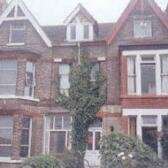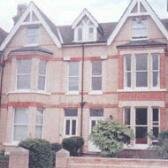Lowestoft
Region: East of England
Local Authority: Suffolk Coastal
Owner Type: Many
Funding Body: EH and HLF CAPS
Year of Intervention: 1998 - 2001
Summary: Lowestoft- enhancing the image of an historic port and seaside resort through the aid of English Heritage and the Hertitage Lottery Fund Conservation Area Partnership schemes (CAPS).
Description: The grand South Lowestoft Seafront Terraces lie within the South Lowestoft Conservation Area, which was designated in 1978. The original seafront terraces, constructed between 1840 and 1900, rise up from the low cliffs and are visible from the seafront promenade in the bay at Lowestoft in Suffolk.
Issue: Properties in the conservation area were damaged during the First World War, causing localised replacement and buildings that are out of scale or at odds with their neighbours. Smaller losses of detail ha also occurred over time through modern home improvements, typically PVC windows and doors, painted brick and concrete tiles. The conservation area includes a largely under-utilised shopping core situated behind the terraces, purpose built hotels, guesthouses and flats. The terraces themselves comprise approximately 60% flats and there is a local planning policy to promote conservation of commercial property and flats to family homes.
Strategy: A CAP scheme has been implemented in Lowestoft, funded by English heritage in the first year and the Heritage Lottery Fund in years two to four. Heritage funding for this scheme totalled £210,000 and was supplemented with a further £1,020,000 of partnership funding. The scheme builds on the Terrace Grant Scheme, and includes a wider area covering the commercial zone behind the terraces and a series of streets at right angles forming an area of formally well-to-do homes, of some quality and detail. It has enabled enhancements to individual properties, which have been achieved in partnership with private owners of both residential and commercial premises, and the upgrading of public areas such as Wellington Esplanade Gardens, which was situated between the Grade II listed Wellington Esplanade Terrace and the sea, forming an integral component of the terrace design. The CAP scheme has been supported by the Kirkley Single Regeneration Budget, European Union Regeneration Development Fund Objective 5b, and delivered in partnership with Suffolk County Council and Waveney District Council.
Outcome: The investment delivered improvements to 140 homes, and enabled 6,000 square meters of the built environment to be enhanced. An indication of the substantial impact of the scheme can be found in an extract form P D James’s Death in Holy Orders published in 2001. He hadn’t visited the town (Lowestoft) for years and on a previous visit had been struck by its depressing air of deterioration and poverty. The sea-front hotels, which in more prosperous times had catered for the summer holiday’s of the middle classes, now advertised bingo sessions. May of the fine shops were boarded up and people walked grey-faced with discouraged steps. But now it seemed to be something of a renaissance. Roofs had been repaired, houses were being repainted. He felt that he was entering a town which was looking with some confidence to its future (English Heritage, Heritage Dividend, 2002:33).
Keywords: Funding, Regeneration
© English Heritage


